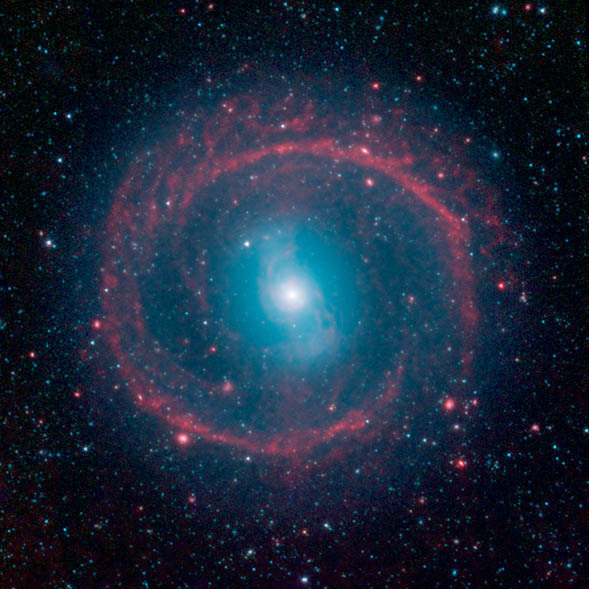NASA’s Spitzer Space Telescope has been in operation for 13 years and has made some extremely important observations of the early universe. Take a look at our favorite images coming from this unsung hero of astronomy!
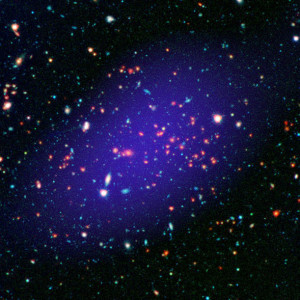
The galaxy cluster called MOO J1142+1527 can be seen here as it existed when light left it 8.5 billion years ago. The red galaxies at the center of the image make up the heart of the galaxy cluster.
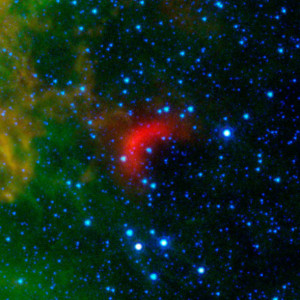
Bow shocks thought to mark the paths of massive, speeding stars are highlighted in this image from NASA’s Spitzer Space Telescope.
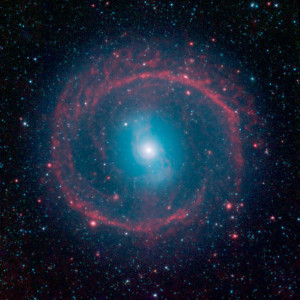
An image from NASA’s Spitzer Space Telescope, taken in infrared light, shows where the action is taking place in galaxy NGC 1291. The outer ring, colored red in this view, is filled with new stars that are igniting and heating up dust that glows with infrared light. The stars in the central area produce shorter-wavelength infrared light than that seen in the ring, and are colored blue. This central area is where older stars live, having long ago gobbled up the available gas supply, or fuel, for making new stars.
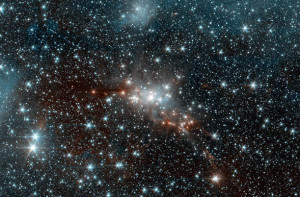
Within the swaddling dust of the Serpens Cloud Core, astronomers are studying one of the youngest collections of stars ever seen in our galaxy. This infrared image uses data from the warm phase of the Spitzer Space Telescope, letting us peer into the clouds of dust wrapped around this stellar nursery.
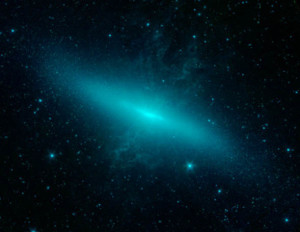
This image shows M82, also known as the “Cigar galaxy,” in infrared light, as observed in 2005. Long-wavelength, infrared light can pass through the cosmic dust that obscures the visible light our eyes see, as well as other short wavelength light, such as ultraviolet. With its dust-piercing, infrared vision, Spitzer therefore allows astronomers to see into and thus better understand otherwise hidden phenomena.
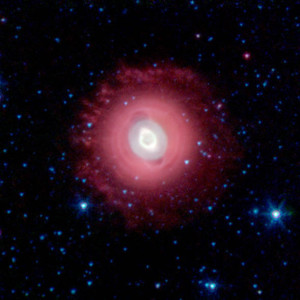
The Ghost of Jupiter, also known as NGC 3242, is located roughly 1,400 light-years away in the constellation Hydra. Spitzer’s infrared view shows off the cooler outer halo of the dying star, colored here in red. Also evident are concentric rings around the object, the result of material being periodically tossed out in the star’s final death throes.

